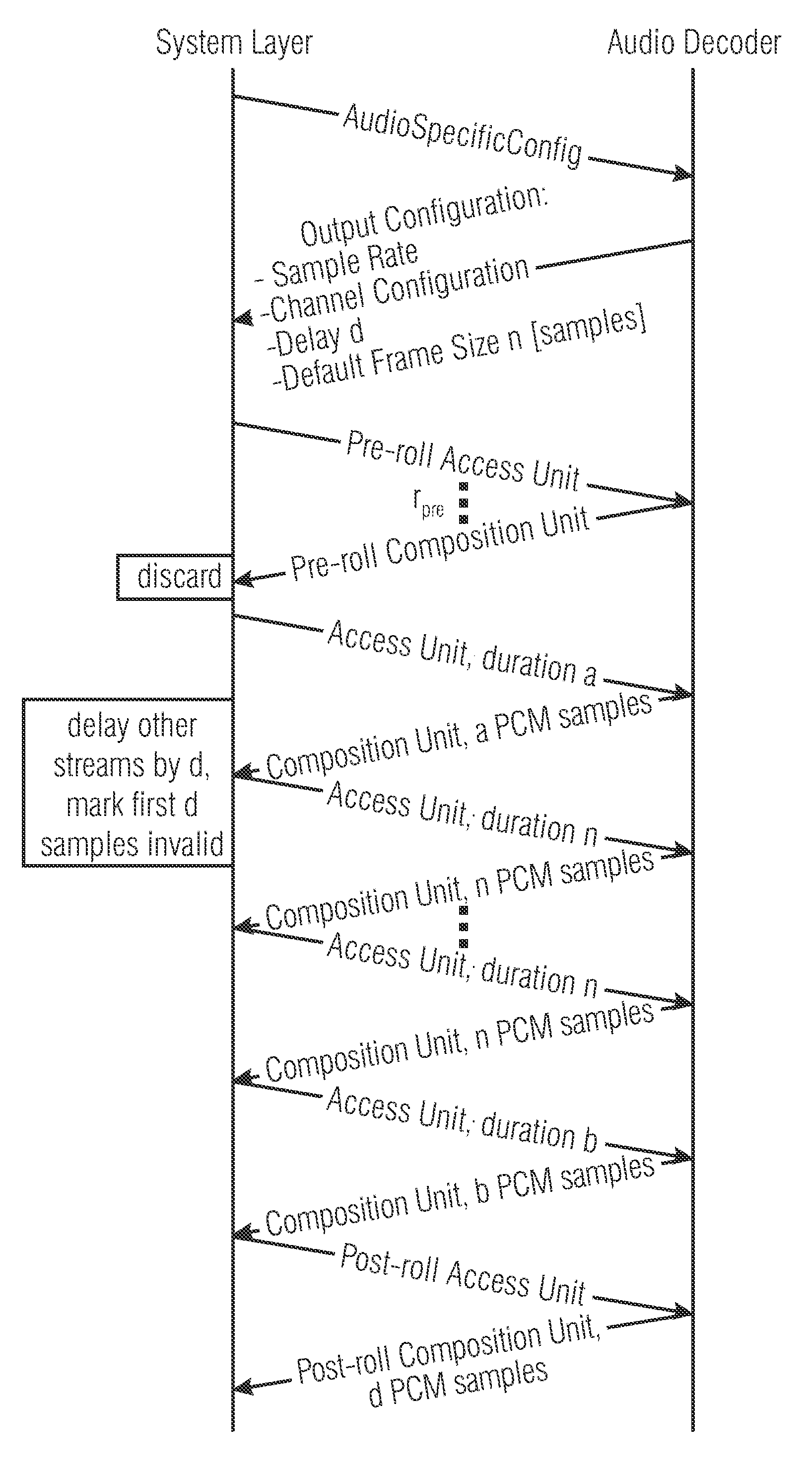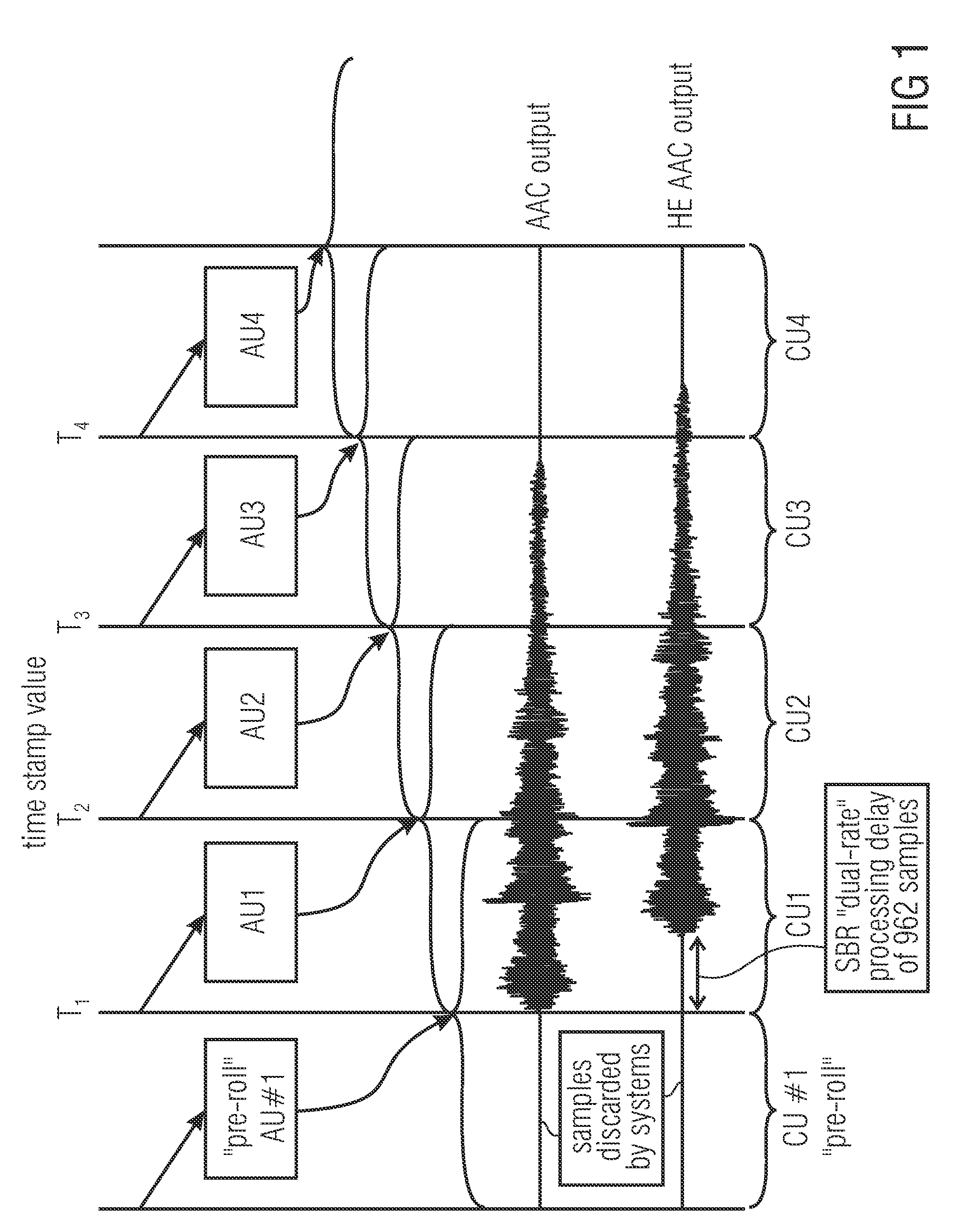Method and encoder and decoder for sample-accurate representation of an audio signal
a sample-accurate representation and encoder technology, applied in the field of method and encoder and decoder for sample-accurate representation of an audio signal, can solve the problems of limited audio bandwidth, loss of information meant, and often only possible digital signal processing with algorithmic delays
- Summary
- Abstract
- Description
- Claims
- Application Information
AI Technical Summary
Benefits of technology
Problems solved by technology
Method used
Image
Examples
Embodiment Construction
[0033]FIG. 1 shows the behavior of a decoder with respect to the access units (AU) and associated composition units (CU). The decoder is connected to an entity denominated “Systems” that receives an output generated by the decoder. As an example, the decoder shall be assumed to function under the HE-AAC (High Efficiency-Advanced Audio Coding) standard. A HE-AAC decoder is essentially an AAC decoder followed by an SBR (Spectral Band Reduction) “post processing” stage. The additional delay imposed by the SBR tool is due to the QMF bank and the data buffers within the SBR tool. It can be derived by the following formula:
DelaySBR-TOOL=LAnalysisFilter−NAnalysisChannels+1+Delaybuffer
where
NAnalysisChannels=32, LAnalysisFilter=320 and delaybuffer=6×32.
This means that the delay imposed by the SBR tool (at the input sampling rate, i.e., the output sampling rate of the AAC) is
DelaySBR-TOOL=320−32+1+6×32=481
samples.
[0034]Typically, the SBR tool runs in the “upsampling” (or “dual rate”) mode, i...
PUM
 Login to View More
Login to View More Abstract
Description
Claims
Application Information
 Login to View More
Login to View More - R&D
- Intellectual Property
- Life Sciences
- Materials
- Tech Scout
- Unparalleled Data Quality
- Higher Quality Content
- 60% Fewer Hallucinations
Browse by: Latest US Patents, China's latest patents, Technical Efficacy Thesaurus, Application Domain, Technology Topic, Popular Technical Reports.
© 2025 PatSnap. All rights reserved.Legal|Privacy policy|Modern Slavery Act Transparency Statement|Sitemap|About US| Contact US: help@patsnap.com



